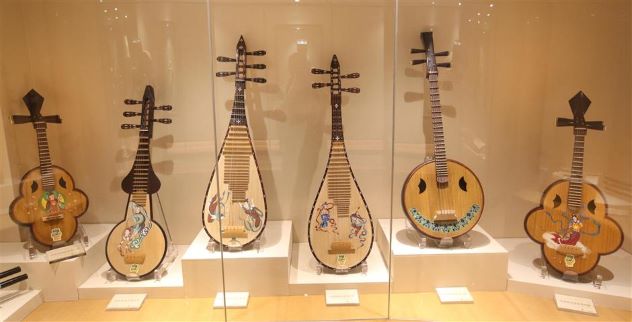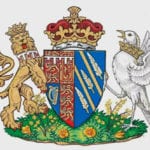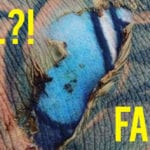 Music
Music  Music
Music  History
History 10 Less Than Jolly Events That Occurred on December 25
 Weird Stuff
Weird Stuff 10 Funny Ways That Researchers Overthink Christmas
 Politics
Politics 10 Political Scandals That Sent Crowds Into the Streets
 Weird Stuff
Weird Stuff Ten Bizarre Facts About The Doge Meme
 Our World
Our World 10 Ways Your Christmas Tree Is More Lit Than You Think
 Movies and TV
Movies and TV The 10 Coolest Stars to Set Sail on The Love Boat
 History
History 10 Things You Didn’t Know About the American National Anthem
 Technology
Technology Top 10 Everyday Tech Buzzwords That Hide a Darker Past
 Humans
Humans 10 Everyday Human Behaviors That Are Actually Survival Instincts
 Music
Music 10 Surprising Origin Stories of Your Favorite Holiday Songs
 History
History 10 Less Than Jolly Events That Occurred on December 25
 Weird Stuff
Weird Stuff 10 Funny Ways That Researchers Overthink Christmas
Who's Behind Listverse?

Jamie Frater
Head Editor
Jamie founded Listverse due to an insatiable desire to share fascinating, obscure, and bizarre facts. He has been a guest speaker on numerous national radio and television stations and is a five time published author.
More About Us Politics
Politics 10 Political Scandals That Sent Crowds Into the Streets
 Weird Stuff
Weird Stuff Ten Bizarre Facts About The Doge Meme
 Our World
Our World 10 Ways Your Christmas Tree Is More Lit Than You Think
 Movies and TV
Movies and TV The 10 Coolest Stars to Set Sail on The Love Boat
 History
History 10 Things You Didn’t Know About the American National Anthem
 Technology
Technology Top 10 Everyday Tech Buzzwords That Hide a Darker Past
 Humans
Humans 10 Everyday Human Behaviors That Are Actually Survival Instincts
10 Unusual, Little-known Musical Instruments
Most of us are familiar with all sorts of musical instruments, whether they’re played by members of popular music bands or orchestras. However, we may not have heard of—much less actually heard—some such instruments, both ancient and contemporary. Those on this list are likely to come as surprises.
Some were invented by composers and musicians, others by a scientist and a statesmen, and still others by artists. Some were reproduced from historical and artistic sources. Each, in its own way, is a fascinating look, so to speak, into the wonderful, multi-faceted world of melodious and harmonious sound.
Related: 10 Bizarre Versions Of Musical Instruments
10 Art Farm Instrument
The Art Farm instrument that Rebecca Reineke and William Jason Raynovich created isn’t really called the Art Farm instrument. It doesn’t have an official name yet. A prototype was constructed only in June 2020, a month after Reineke and Raynovich began to work together on its creation.
Mostly, Raynovich developed the idea for the percussion instrument. Reineke, a sculptor, gave shape to it. The instrument is played using rubber mallets to strike a box above which a parallel elevated board extends. The instrument is environmentally friendly too. As reporter Jessica Votipka observes, it is built of reclaimed wood, “a plank of carefully carved out redwood serving like a ‘key’ on a xylophone or marimba.” Various sounds are created, depending on where and with what implement the instrument is struck.
To showcase its unique sound, Raynovich wrote a composition in which the instrument’s music is the foundation. The music is then interpreted by a computer program. As Raynovich explains, “The composition…has a lot of computer programming. It’s a lot of math,” which frightens off some performers.[1]
9 Gittler Guitar
According to its official website, the Gittler Guitar is an experimental instrument. During the 1970s, its creator, Allan Gittler, was motivated by the idea of “reducing the electric guitar to the most minimal functional form possible.” Described as resembling something out of an H. R. Giger painting and consisting of frets, strings, a nut, and a bridge, today’s version, as further streamlined by Russ Rubman, the president of Gittler Instruments, looks like nothing more than a fretboard.
Only 60 of Gittler’s stainless-steel originals now exist. Twenty-nine inches long and three inches wide, they weigh in at five pounds, boasting 31 frets. Rubman’s version is constructed of solid aircraft-grade Titanium with the tuners on the bottom, rather than the top, of the instrument, which comes with a shoulder strap and a strap-on polyurethane “neck shape.” It is lighter—at three pounds—but of the same width and with the same number of frets as the original.[2]
8 Ransingha
As YK Murthy writes in an online article for the Antiques Home Museum website, the copper, curved ransingha trumpet is an updated “royal and vintage instrument.” It consists of two pieces, the upper dhaturo and the narrower lower section, the dhopbana. These pieces are embellished with five brass trims. Joined with one another, the two pieces form an “S”-shaped trumpet.
A cord strung on hooks at the upper and lower ends of the dhaturo is practical as well as decorative. When the ransingha is not being played, the dhopbana is inserted into the dhaturo, and the cord is hung on a nail in the wall. The cord also allows the musician to carry the instrument. It hangs on the player’s shoulder, the trumpet’s “curved section” resting behind the musician’s shoulder.
The ransingha is 60 inches long but, because of its shape, it is only 42 inches tall. One inch in diameter at the small end of the dhopbana, the instrument’s diameter increases to 5.3 inches at the far end of the dhaturo; the blowhole measures 0.2 inches in diameter. As Murthy explains, the metal balls with which the five hollow trims are filled “produce musical sound when the trumpet is jingled or [its] position is changed.” The ransingha’s alternate name, narsingha, which means “buffalo horn,” recalls the material from which the instrument was originally made.
The ancient Indian trumpet can be heard as far away as 15 kilometers and was played during auspicious occasions, including marriages, when the bridal party approached “holy places.” An adept player could make sounds like someone calling out a name, scolding, or alerting other parties to their presence, allowing them to pass by safely on the narrow roads. The ransingha was also played at “religious processions” to frighten off evil spirits, during military battles, and during victory celebrations.[3]
7 Mogao Caves Instruments

Half of the 400 Mogao Caves—or Thousand Buddha Grottoes—constructed in 366 depict musical instruments recreated as modern sculptures. Lutist Chen Haiqi first saw them during a performance in an exhibition hall at the 10th Dunhuang Tour—Silk Road International Tourism Festival in northwest China’s Gansu Province in September 2021. The sight of them, she said, transported her 1,000 years into the past.
According to the China.org website, in all, 240 of the 6,000 musical instruments depicted in the grottoes’ ancient Buddhist artwork have been brought back to life, including percussion instruments, string instruments, and wind instruments. Among them are ruans (“moon guitars”), bamboo panpipes, flutes, and ancient konghou. The replicated versions were played in art performances during the expo, the website notes. “From silent murals to melodious music played by the restored instruments, I witnessed a dialogue between history and art,” said Chen.[4]
6 Telharmonium
In an alliance of electricity and music, the telharmonium creates “electrical waves of musical sound,” says Thomas Commerford Martin, in his review of the unusual instrument. Dr. Thaddeus Cahill’s invention, a complex array of inductor alternators, switchboards, keyboard, “tone mixers,” and wiring, works, Martin explains, in a manner similar to that of the pipe organ, with electricity replacing the organ pipes’ air as the medium upon which the musician plays. The resulting music then passes through transformers and is blended by “tone mixers” and is heard as chords, beautiful and pure in tone.
Players can create complex music that mixes the sounds of “string [and] brass [as well as] wood effects…simply by mixing the harmonics—that is, the currents—in the required proportions,” Martin adds. He identifies many potential markets for telharmonium music, including homes, hospitals, factories, restaurants, theaters, hotels, and orchestral venues, all at the “throw [of a] switch.”[5]
5 Cristal Baschet
It’s unlikely that a shopper will find a Cristal Baschet in a music store. The organ, also known as a Crystal Organ, is made of glass rods, metal, and wood. Brothers and fellow artists Bernard and François Baschet invented the unusual instrument in 1952. Composer Marc Chouarain explained and demonstrated how to play the Crystal Baschet by stroking its 56 chromatically tuned rods with his wet fingertips.
The instrument delivers sounds in 3.5 to 6 octaves. Stroking the rods, Chouarain says, vibrates them, and the vibrations pass “to the [instrument’s] heavy block of metal by a metal stem whose variable length determines the frequency.” The instrument amplifies the sounds using fiberglass cones fixed on wood and…a tall cut-out metal part shaped like a flame. In addition, “‘ whiskers’…under the instrument…increase the [volume] of high-pitched sounds.”
The versatility of the unusual instrument is shown by the diverse musical styles of those who have played it. This includes sitarist Ravi Shankar (1920-2012), Blur lyricist and instrumentalist Damon Albarn, electronic music duo Daft Punk, the rock band Radiohead, singer-songwriter-actor Tom Waits, and songwriter-musician Manu Dibango (1933-2020).[6]
4 Musical Sculpture
Amazon’s rainforest may be disappearing, acre by acre, but its slow passing has not escaped The Burned Instruments Orchestra, whose members, composers Marco Scarassatti and Livio Tragtenberg, create “music from the silent witnesses of [its] destruction,” writes Eduardo Simantob. A mix of Brazilian and African rhythms with British and American psychedelia and rock, the orchestra’s sounds are produced by musical sculptures constructed from the burned and deadwood of the rainforest fires and are intended to increase listeners’ “awareness of the plight of the rainforests.”
Scarassatti and Tragtenberg were inspired by Swiss cellist, composer, and inventor Walter Smetak (1913-1984), who invented nearly 200 musical sculptures that he played as instruments. His music, which is now digitized, seems more in tune with Asian than with Western traditions and challenges the latter’s “tonal system,” Simantob says.[7]
3 Dune Instruments
Composer Hans Zimmer wanted the music he scored for Frank Herbert’s Dune to sound unique. To this end, he created his own sounds using innovative techniques, such as scraping metal, and included Indian bamboo flutes, Irish whistles, guitar distortions, and spasmodic drumming he called an “anti-groove.”
In addition, Zimmer used both conventional instruments, such as bagpipes and completely new, unusual instruments such as Pedro Eustache’s 21-foot-long horn and a “contrabass duduk,” a modern version of an ancient Armenian woodwind instrument. Zimmer said he composes in surround sound, creating “big sound for the big screen.”[9]
2 Armonica
In addition to composers, sculptors, professional inventors, and artists, a politician and statesman—in fact, one of America’s founders—invented an unusual instrument: a glass harmonica, or armonica. Although Benjamin Franklin (1706-1790) was not the first armonica inventor, his instrument was a definite improvement on the set of water-filled glasses he saw the British Royalty Society’s Edward Delaval play.
Franklin’s armonica consisted of 37 glass domes, each of which had a hole in its middle, ranging from three to nine inches in diameter, arranged along a spindle of iron, atop a wooden case mounted on four legs. A player, seated before the instrument, played it by tuning a rod with their foot while stroking the domes with their fingertips. To differentiate the keys of the octaves, Franklin employed a color scheme, using white to designate the semitones, and the seven prismatic colors to mark each of the three octaves’ other notes. The inventor also described its advantages. It produced “incomparably sweet” tones, which could be “swelled and softened” and lengthened or shortened by finger pressures and needed to be tuned only once and never again.[9]
1 A Stalactite Organ
Human ingenuity teamed with icicle-shaped mineral deposits created the Great Stalacpipe Organ in the Luray Caverns of Virginia’s famed Shenandoah Valley. As “the world’s largest musical instrument,” the unusual organ takes up 3.5 acres of the caverns. When electronically tapped by rubber-tipped mallets, the organ produces “tones of symphonic quality.”
Its inventor, Leland W. Sprinkle of Springfield, Virginia, worked at the Pentagon as a mathematician and electronic scientist. His knowledge helped him identify the specific stalactites to tap, both literally and figuratively, so that each would be an exact match for a musical scale.
The Oddmusic.com website explains how the instrument was created and how it is played. After the stalactites were chosen, “electronic mallets were wired throughout the caverns and connected to a large four-manual console.” Presses of the console’s keys cause particular mallets to strike specific stalactites, all of which are tuned to concert pitch.[10]








